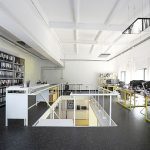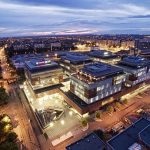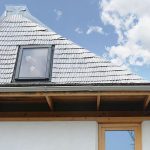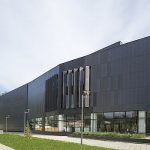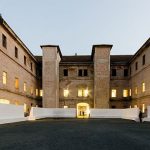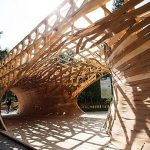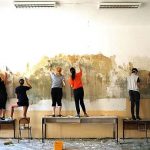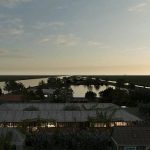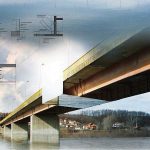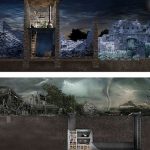Text: Levente Szabó
The Romanian Order of Architects, Timiș County Branch started an exciting venture in 2016 by organizing a series of regional events, which – not only for actors shaping the architectural public life in the narrow region – provided an example of what openness, curiosity of each other’s best practices and the willingness to cooperate might mean, particularly when these efforts are strengthened by a professional program organizing.
Namely, the concept of BETA focused on regional cooperation in the strict sense: with the exception of entries in the categories of graduation projects, architectural visions and architectural texts, the competition was open either for works realized in this region or for architects working in this area. The DKMT region indicates the territory between the Danube-Kris-Mures-Tisza rivers, containing the counties Timiș, Caraș-Severin, Arad and Hunedoara in Romania, Csongrád and Bács-Kiskun in Hungary and the province Vojvodina in Serbia. At the same time, due to the geographical features of this region, the event was able to focus primarily on the sub-centers instead of the large centers (capitals), and also to present a good example of any trans-boundary regional cooperation between the architectural organizations and the actors who form and shape architecture or its education.
The almost half a year-long series of events included many exhibitions, conferences, and presentations, however, the highlight – held as the closing event of the Biennial – was the architectural competition, its judging process and the closely related exhibition and award ceremony.
The juries and the competition
The organizers have taken the importance of regional cooperation across the three countries seriously in all aspects, and this attitude is represented both in the website of the call for projects and in the selection of the jury members for the certain competition categories. The competition – despite the limitations of the regional frameworks – opened a highly ambitious framework: not less than 16 categories were arranged in three groups, judged by three separate juries.
The first and promisingly the broadest category included projects under the keywords: ambient, single family housing, collective housing, commercial, services, institutional and cultural buildings and also heritage.
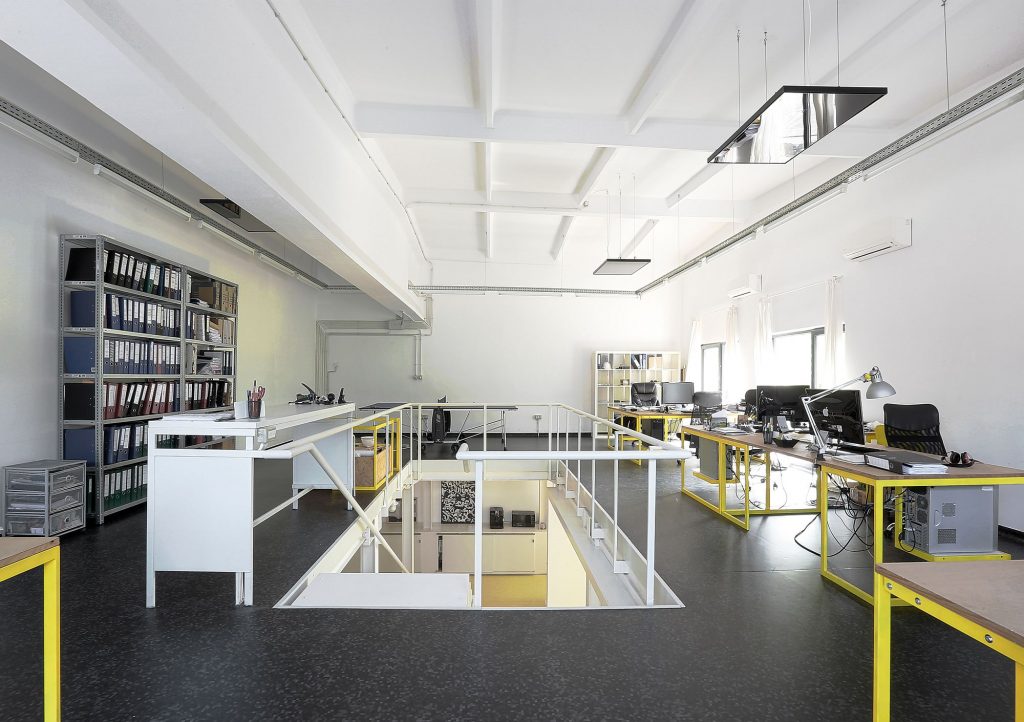 *Competion – „Ambient” category. Prize: VAO16 – Vitamin Architects: Paul Buchert, Rudolf Gräf, Lavinia Popa: Redesigning of an old heating facility
*Competion – „Ambient” category. Prize: VAO16 – Vitamin Architects: Paul Buchert, Rudolf Gräf, Lavinia Popa: Redesigning of an old heating facility
The members of this jury were Adrian Untaru, architect from Bucharest, member of ADNBA studio, Goran Vojvodić, director of the Biro VIA architecture bureau in Belgrade, associate professor of the Architectural Faculty, University of Belgrade and Balázs Marián, lead architect of GerebenMariánÉpítészek studio, lecturer of the Moholy-Nagy University of Art and Design, Institute of Architecture.
The second category was established as a section for basically urban issues, including urban-rural development, public space projects, infrastructural works or initiatives for quality architecture. The following architects participated in the work of this jury: Klaus Birthler from Romania, member of several researcher and non-profit organizations, Darko Polic, associate of the Urban Planning and Development Center in Novi Sad, regular member of international juries, and Árpád Szabó, architect-urbanist, associate professor at the BME, Faculty of Architecture, Department of Urban Planning and Design.
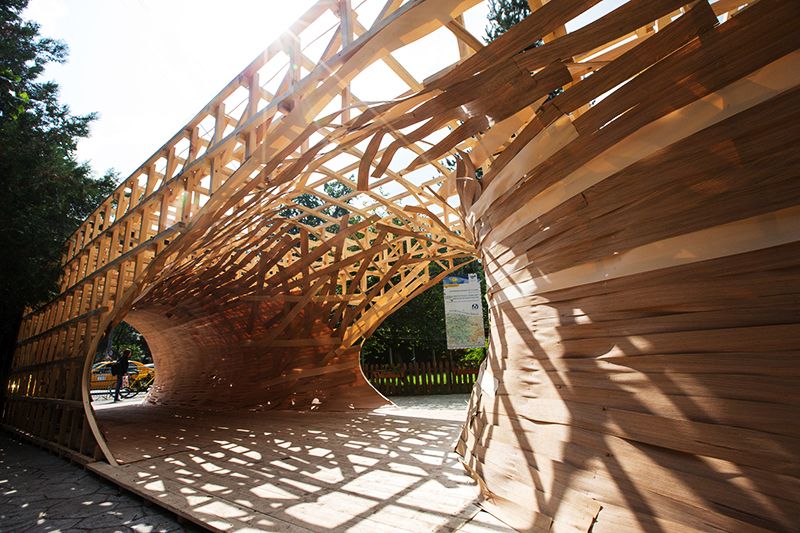 *”Public Space” Section. Prize: ADM23 – Diana Giurea, Zoran Popovici (edukube): Hidden Nest
*”Public Space” Section. Prize: ADM23 – Diana Giurea, Zoran Popovici (edukube): Hidden Nest
Finally, the third category – focusing on the graduation projects, a rather wide range of architectural visions and architectural texts – was curious about the initial steps of an architectural practice, the freest concepts and approaches coming from architectural theory. The jury consisted of Ștefan Ghenciulescu, architect, researcher and associate professor of the Ion Mincu University of Architecture and Urbanism, Bucharest, also the chief editor of Zeppelin magazine, Ivan Kucina, former lecturer at several universities, currently the visiting professor at the Faculty of Architecture, Anhalt University of Applied Sciences, co-founder and program director of the BINA (Belgrade International Architecture Week), and Zsolt Vasáros, architect, associate professor of the BME Faculty of Architecture, leader of projects being partly institutional, partly born from student collaborations, planned to and realized in international conflict zones.
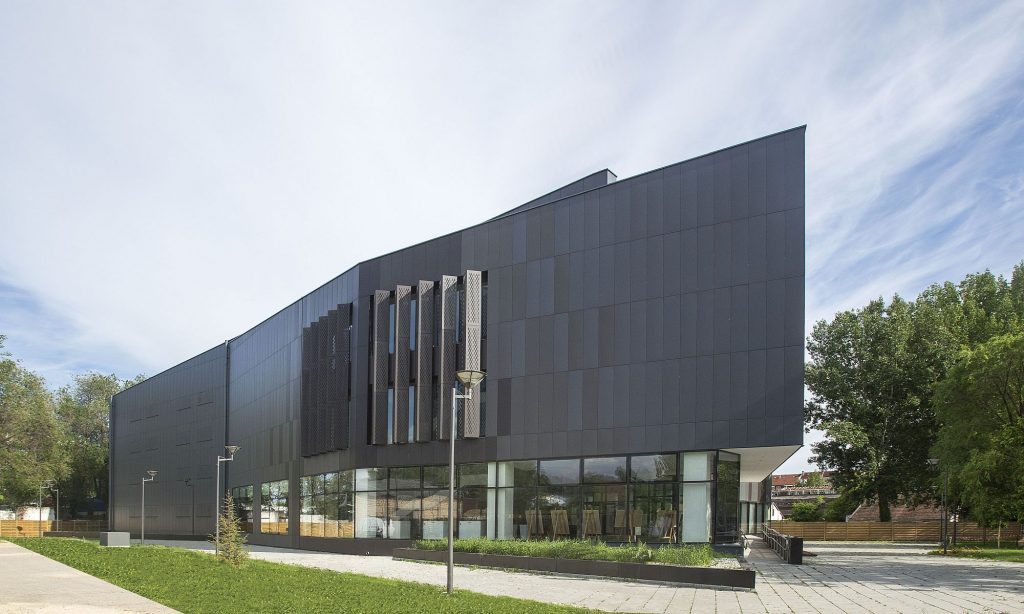 *”Institutional buildings”section. Award: PRO19 – Marija Milin Krunić (“Pro-ing” doo), City Archives of Novi Sad
*”Institutional buildings”section. Award: PRO19 – Marija Milin Krunić (“Pro-ing” doo), City Archives of Novi Sad
The jury’s work was conducted in two stages: the online entries were first pre-qualified, then the narrowed group of projects was assessed in details during a three-day site judging. Out of the 114 submitted entries – with an uneven distribution among the 16 announced categories –78 (61 in the building or design category and 17 in the architectural text category) were selected in the pre-qualification stage. After several rounds of site judging, 23 entries stood out, resulting in 13 awards, 7 mentions and 3 nominations.
 *”Heritage”section. Award: CUO07 – Anca Timofticiuc, Marius Mensing, Monica Sache,Vitali Stanila, (MENSINGTIMOFTICIUC, TAG ARCHITECTURE),: Cazarma U
*”Heritage”section. Award: CUO07 – Anca Timofticiuc, Marius Mensing, Monica Sache,Vitali Stanila, (MENSINGTIMOFTICIUC, TAG ARCHITECTURE),: Cazarma U
Seeing the submitted projects, their distribution within all categories and the juries’ decision, we cannot speak about a faithful portrait of the architectural developments in the region or the social, economic or other processes naturally existing in the background of architecture. Perhaps it would have been an excessive demand from such a broad selection of projects. However, one could see a variety of approaches: unknown or lesser-known attitudes, popular mainstream or even provincial architecture, but also experimental, pathfinder efforts and even most abstract, theoretical works. A firmer position towards scale and, where appropriate, the predominance of inventive projects might be promoted by a possible limitation of the categories of the following biennial. This paper will not discuss all awarded entries, it only tries to draw attention to remarkable projects most typical of their category.
The 8 categories of the jury chaired by Goran Vojvodić received a total of 27 entries, of which 8 were received awards. These categories mainly included entries testifying the well-known, yet confident approach of quality architecture.
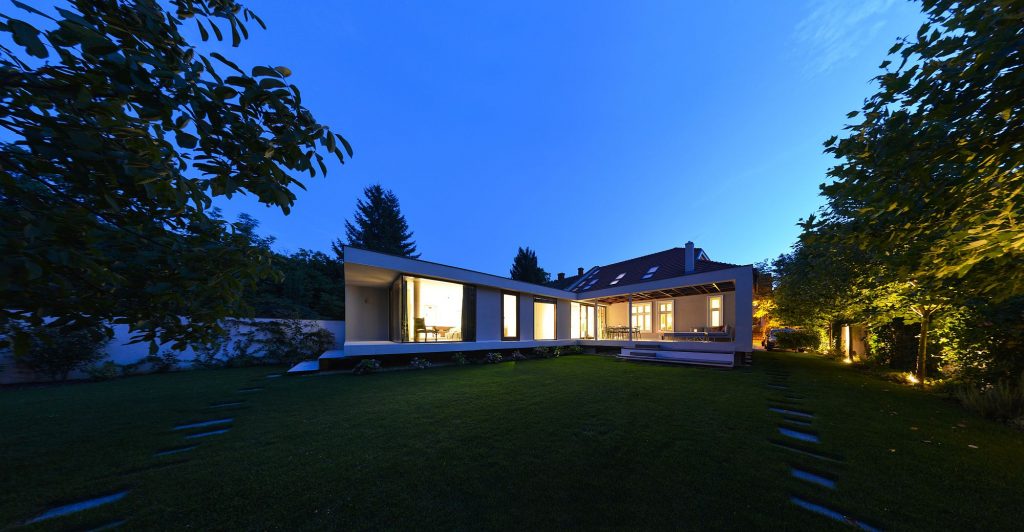 *Home of art”Individual dwellings” Section. Prize: HOA16 – Vlad Gaivoronschi (Andreescu & Gaivoronschi): Home of art
*Home of art”Individual dwellings” Section. Prize: HOA16 – Vlad Gaivoronschi (Andreescu & Gaivoronschi): Home of art
For example both the extension of a villa and the Timisoara office complex byAndreescu & Gaivoronschi office are projects that can be regarded as excellent representatives of the mainstream architectural aspirations even at regional level.
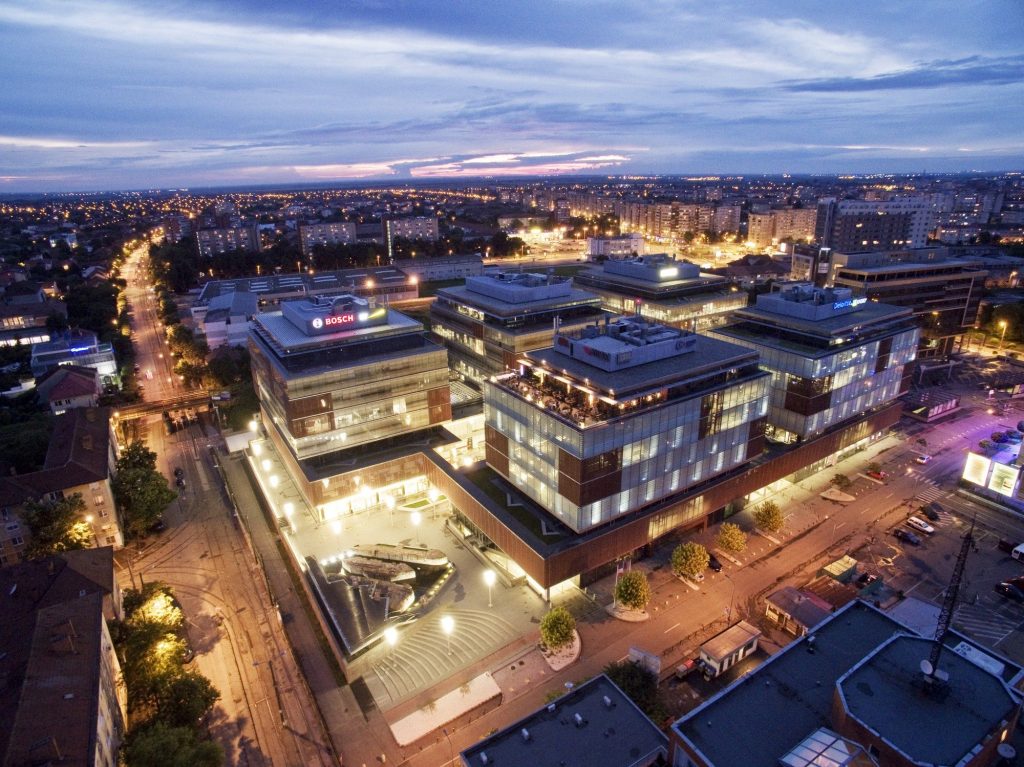 *”Commercial buildings” section. Award: CBC16 – Vlad Gaivoronschi (Andreescu & Gaivoronschi), City Business Centre – final ensemble (C-D-E buildings and public space)
*”Commercial buildings” section. Award: CBC16 – Vlad Gaivoronschi (Andreescu & Gaivoronschi), City Business Centre – final ensemble (C-D-E buildings and public space)
The rural guest house by Arhigest studio can be mentioned as a counterpoint. The rural small-scale project that includes renewed archaic construction technologies (rammed-earth walls), recycled materials (shutters) and also installations providing state of the art operation (photovoltaic system) in one single residential building.
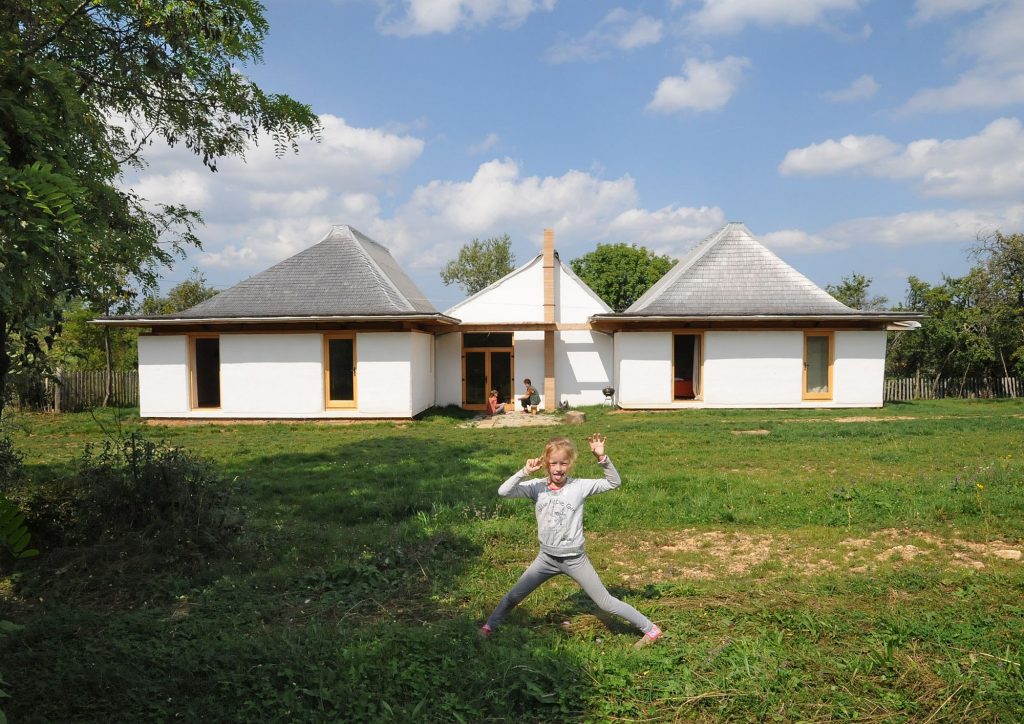 *Secțiunea „Servicii”. Premiu: LLS38 – Silvestru Mihai, Paută-Colibășanu Raluca (Arhigest): Casă din pământ
*Secțiunea „Servicii”. Premiu: LLS38 – Silvestru Mihai, Paută-Colibășanu Raluca (Arhigest): Casă din pământ
Moreover, all of these features – and this is not all common for projects of this kind at all – are completed with by a remarkable architectural and spatial quality.
The urban section led by Árpád Szabó was smaller in number, a total of 11 designs were submitted, and finally three awards were given by the jury. Liliana Mercioiu Popa’s public art installation, What about you? erected on the new public square reconstructed within the Maria Theresia Bastion in Timișoara, can be regarded as a built performance that makes townspeople interact.
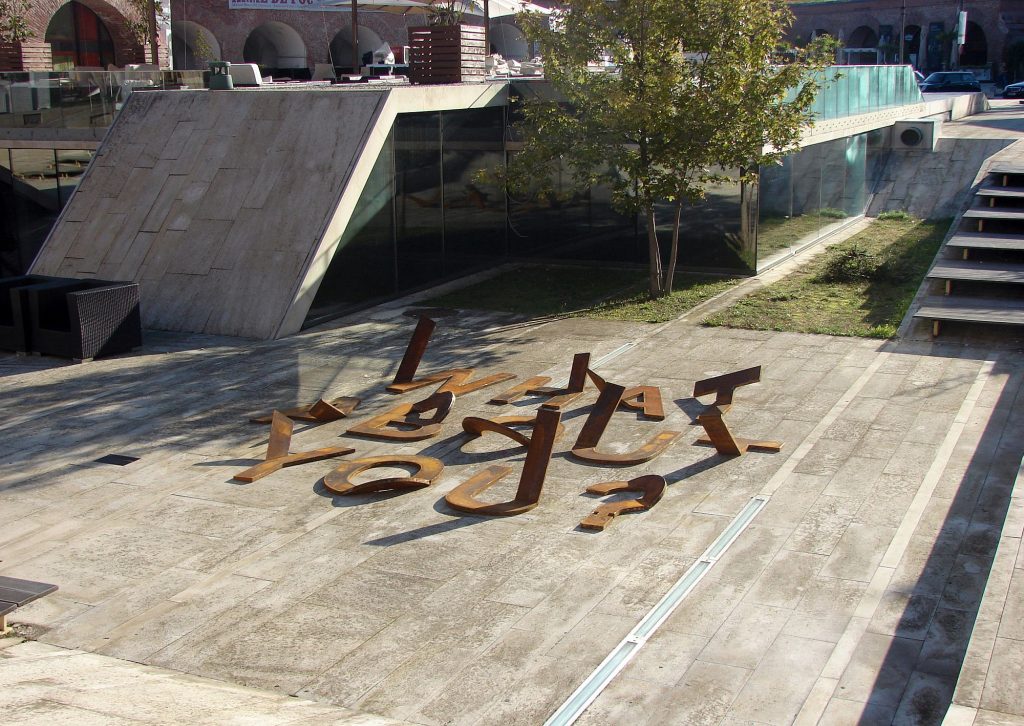 * ”Art in Public Space” section. Award: FLI04 – Liliana Popa: WHAT ABOUT YOU?
* ”Art in Public Space” section. Award: FLI04 – Liliana Popa: WHAT ABOUT YOU?
The text, formed by letters made of bent steel sheets, could only be read at certain angles, people need to lean close and bend down, thus exiting their comfort zone.
The joint work of Brîndușa Raluca Havași and a number of high school students, My Dream Classroom! is an exciting architectural project that fits into the architectural-visual education’s aspirations of today: the designers tailored their own classroom to their own liking. The realized project is as much a model as an indicator of a process, and it was associated with a number of other initiatives.
 *”Initiatives for Architecture” section. Award: HBR76 – Brîndușa Raluca Havași: „De-a arhitectura” in my school: My Dream Classroom!
*”Initiatives for Architecture” section. Award: HBR76 – Brîndușa Raluca Havași: „De-a arhitectura” in my school: My Dream Classroom!
The third jury led by Ivan Kucina collected entries with utopian plans, graduation designs and architectural texts. This group received the largest number of projects, namely 66, which were filtered through a strict pre-qualification stage, and finally only four entries were awarded. A great many, i.e. a total of 17 architectural texts were submitted. However, according to the jury, generally the diversity of mixed genres and a quality not exceeding the stereotypes of the genre were typical of the entries. András Cseh’s essay Many is beautiful stood out from the crowd, arguing for the complex patterns of urban life as the only token of naturalness available in the contemporary urban chaos of our time. In the category of architectural visions, the poetic work of Branko Stanojević and Milena Strahinović should be highlighted, also receiving an award.

Their installation, placed to the middle of the bridge over River Drina, which is the border between Bosnia and Herzegovina and Serbia, implements the illusionary absence of the bridge’s center, referring to the traumas of the two countries, and at the same time inspiring the individual and collective resolution of these traumas.
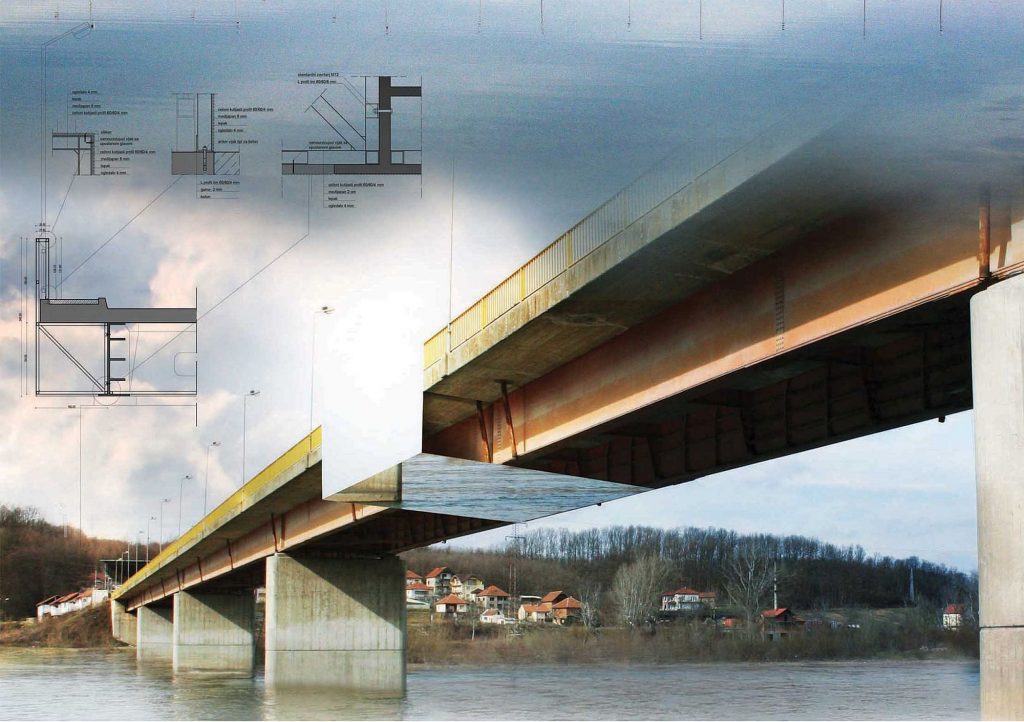
*”Architectural Visions” Section. Prize: BST31 – Branko Stanojević, Milena Strahinović: Border
Lucian Tofan’s diploma project d, an ecological research center in the Danube Delta presented a rational, yet emotional solution with reference to Aldo Rossi’s famous quote („an amphitheater will be almost always empty”).
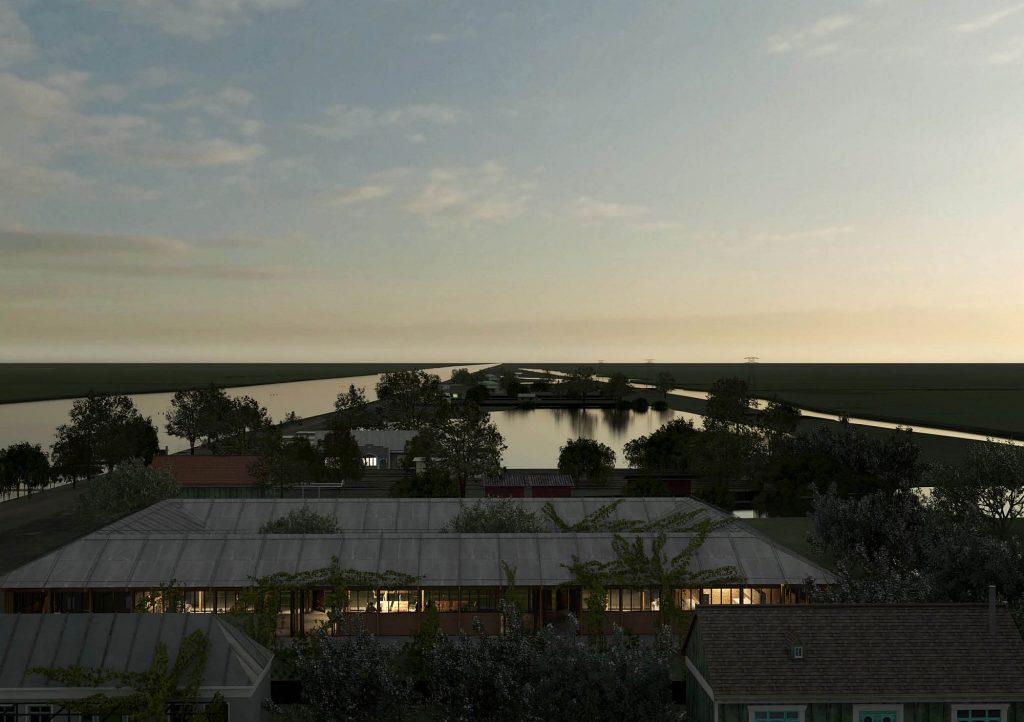
The architect designed multi-purpose spaces capable of accommodating both the functions of a research center and the local community’ needs.
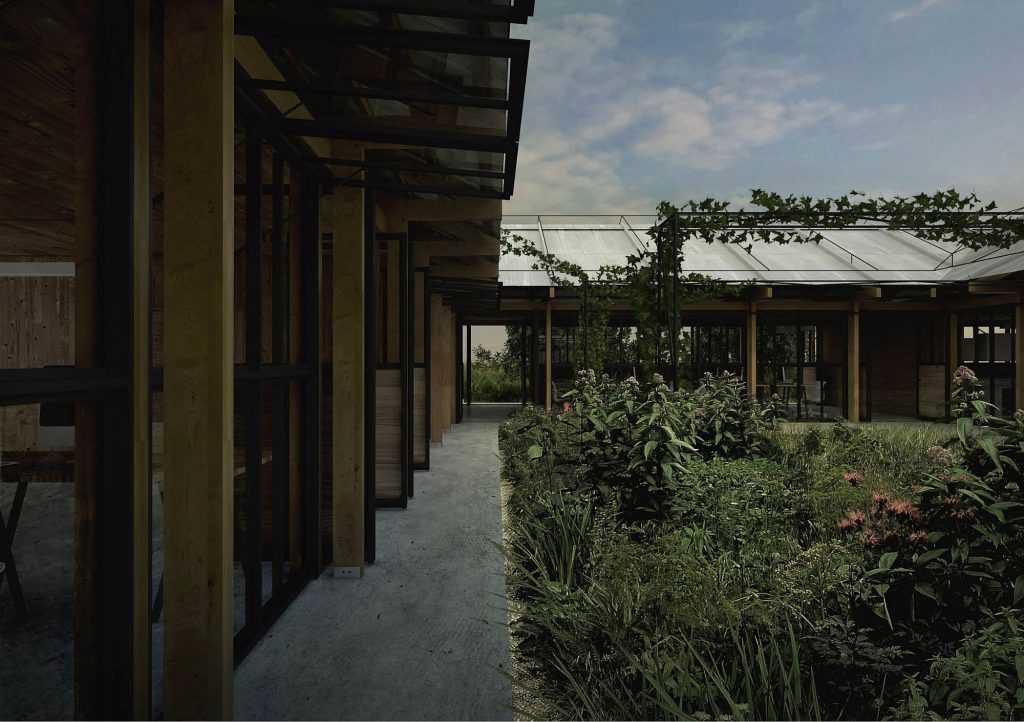 *”Diploma works” section. Award: LLL11 – Lucian Tofan: Ecological research center in the Danube Delta
*”Diploma works” section. Award: LLL11 – Lucian Tofan: Ecological research center in the Danube Delta
Beyond the professional nature of the competition, it was the organizers’ declared objective to present the entries also to non-professionals who are interested in architecture and the city. To this end, a travelling exhibition assembled from the prequalified works and presented with a single graphic-look was exhibited in a number of public spaces (clubs, libraries etc.) in Timișoara between 17 October and 20 November.
Presentations of the jury members
An important event of the three-day judging process were the conference series that took place on 23th, 24th and 25th November in front of large audiences, and which consisted of the presentations held by the members of the various juries. On one hand, the 45-minute presentations gave an opportunity to reflect on the topics of the particular sections, but most of all, the audience could get acquainted with the jury members’ own practices and ideas.
On 23th November, in his lecture Towards a Civilised Architecture. Criticism, teaching, innovation, empathy, Ștefan Ghenciulescu discussed the lack of trust in the judgment of the built community which had once existed but is now fallen apart, and also the lack of architectural quality in the average building. He mentioned community involvement, general empathy and – instead of the aesthetic considerations of design – the architects’ organizational and networking tasks as the basic attitudes that would be able to solve the problems of the present state. In his lecture the examples were taken partly from the realized projects published in the Zeppelin magazine, partly from the scope of the university projects carried out in collaboration with his students.
In his lecture Practice-research-education and beyond… Discussion on the multilayered structure of the architecture in time and space, Zsolt Vasáros tried to illustrate through his own university works and intertwining architect office projects what research-based design could mean in practice, practice-based education could mean in the training of architects and also research based on on-site field trips could mean in scientific works. The three ecologies: environmental, social, mental was the title of Ivan Kucina’s lecture, who presented the environmental, social and mental aspects of the concept with the help of the mottos: „many for one”, „battle for everydays” and „relational good”. The projects presented in his lecture, chosen mainly from the field of education, revealed an empathic approach to architecture. All three jury members have reflected on the genres of their category – although with different emphases –, and presented the new and desirable focuses in architectural education as well as their related own practices, associating their own affinity with the subject (be it the editorial job of an architectural magazine or the management of projects in the Middle East).
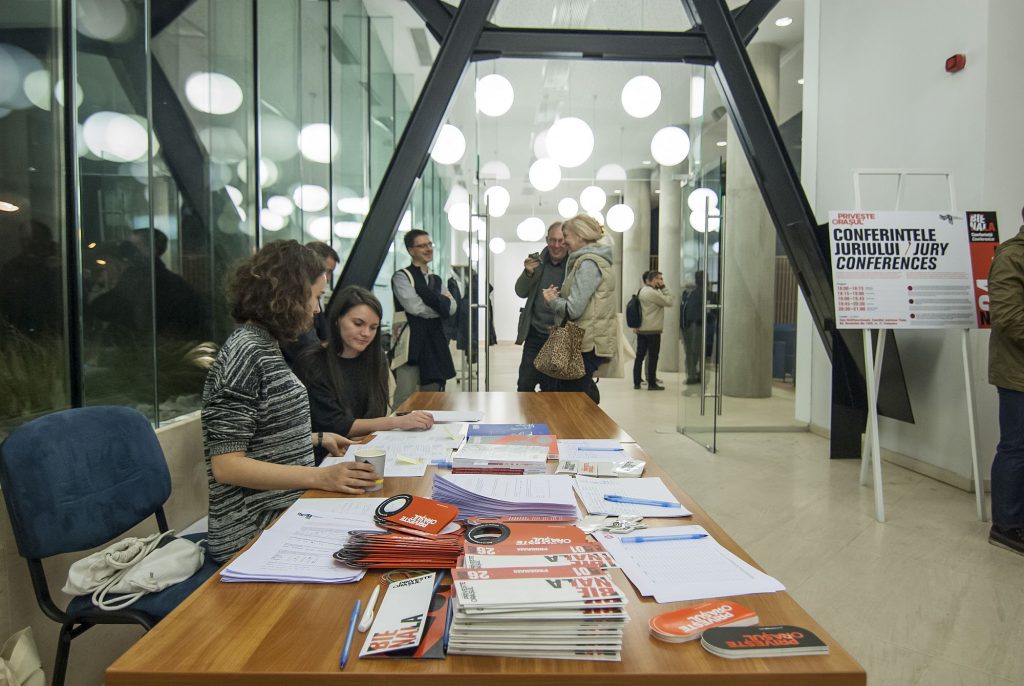
The next day, on 24th November, the first lecturer was Klaus Birthler, who held his videotaped presentation from afar, in which he introduced small-scale urban projects as remarkable examples.
In his lecture Spheres of Urbanistic action, Árpád Szabó described urban interventions in a variety of scale: starting with the master planning of Hungarian industrial cities like Miskolc or Pecs, through the forward-looking participative public place planning model of the capital to the most exciting topics which he – as the secretary of the international EUROPAN competitions – knows quite well. This way he gave a sight into both the urban/urban-structural and also the human scale of urban planning, landscape design and strategy development, and at the same time the strategic options of the process itself that worth to be followed. Through the examples, he argued for the approach that urban planning should be more of a community-building “mindset” than a technical process.
Finally, the day ended with Darko Polic’s lecture Altruism as a planning principle in which he presented, inter alia, the works of the organizations that try to offer a wide variety of support for those who are most in need during the architectural and urban design processes e.g. for activists or the affected communities. Such organizations are the Urban Planning and Development Center in Novi Sad or the Center of Architecture Belgrade. The urban or even rural development plans, public space forming or architectural projects belong to the organizations’ undertaken area of operation just like the infrastructural investments or art projects implemented in public spaces. Also, the lectures of these three jury members were organically connected to the urbanistic nature of their section. In accordance with the field of the lecturers’ practice, the presented series of case studies showed up a wide range from very concrete urban design projects to the methodology of community-supporting activities.
After the first and second days focusing on the educational and urban activities, the third day primarily and explicitly discussed architectural practices in the traditional sense of the word. On the evening of 25th November, first Adrian Untaru debuted as the representative of the young generation of contemporary Romanian architecture, presenting a housing project realized in Bucharest between 2013-16, their work Hilariopolis introduced at the 20016 International Architecture Exhibition, Venice, and also another apartment house in Bucharest completed in 2016. Goran Vojvodić is a mature figure of Belgrade’s contemporary architecture, already having an imposing oeuvre. By using the subcategories of the jury as a guideline, he presented essentially all the stages of his oeuvre considered to be significant. Balázs Marián, the third jury member with remarkable Hungarian and international successes, first described the specific features of MOME, the most important Hungarian craft-based institute for architectural education. He continued with the temporary interior design plan that became necessary because of the new campus construction. Based on this plan, the MOME now found a home in the vacant building of the BME for two years. Finally, he introduced the most exciting current works of his architecture office to the audience.
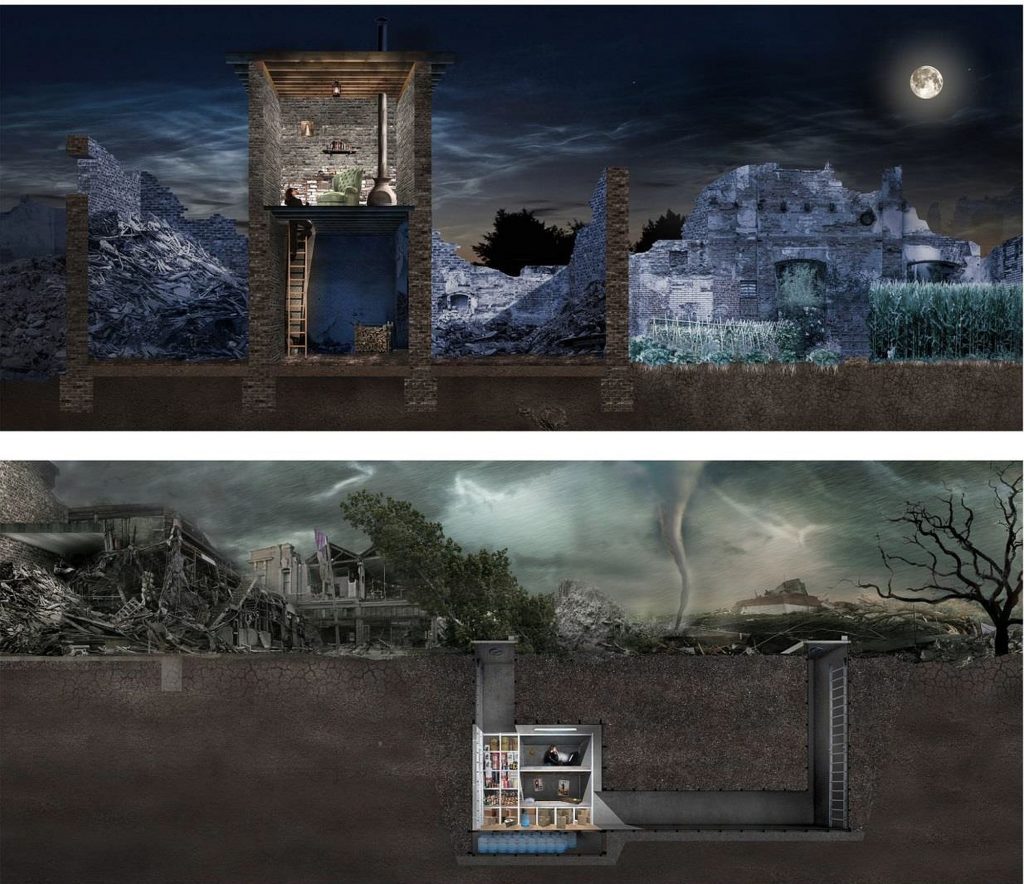 *”Architectural Visions” Section. Prize: : REP03 – Petrovicz Anna, Zsuzsanna Peter: Repercussion – Visions about Our Future
*”Architectural Visions” Section. Prize: : REP03 – Petrovicz Anna, Zsuzsanna Peter: Repercussion – Visions about Our Future
Conclusion
A number of professional supporters and sponsors made the series of biennial events possible. However, two things were essential for achieving a high quality of organization. The financial backing was established by the remarkable structure of cultural funding in Romania, in the framework of which a portion from the tax for every construction project is allocated for cultural purposes. The Romanian Order of Architects also benefits from this fund and the BETA program series demonstrated a high utilization of this system.
Nevertheless, also the intellectual background has to be mentioned beside the financial one. The project’s supporter, Timis County Chamber assigned the program’s organizing and implementing tasks to an enthusiastic, young and ambitious group of people. They were able to carry out this diverse international project with exemplary thoroughness and generosity, showing a clear example worth to follow even for the actors shaping or trying to shape the architectural public life of the region, or in a broader sense that of the participant countries.
The follow up of the local or global developments and phenomena, and also the monitoring of patterns are our elementary interest and task, most of all in order to achieve general information and references. Increasingly it seems that the Central and Eastern European region, and within that narrower territorial co-operations can provide a real, practical field, because the similarity of the historical, economic background and that of the opportunities ab ovo mean comparable boundary conditions. This does not mean giving up our dreams, but on the contrary: when thinking in smaller regions – and this is the lesson of the BETA series of events – the sea itself can be seen in a single drop.

